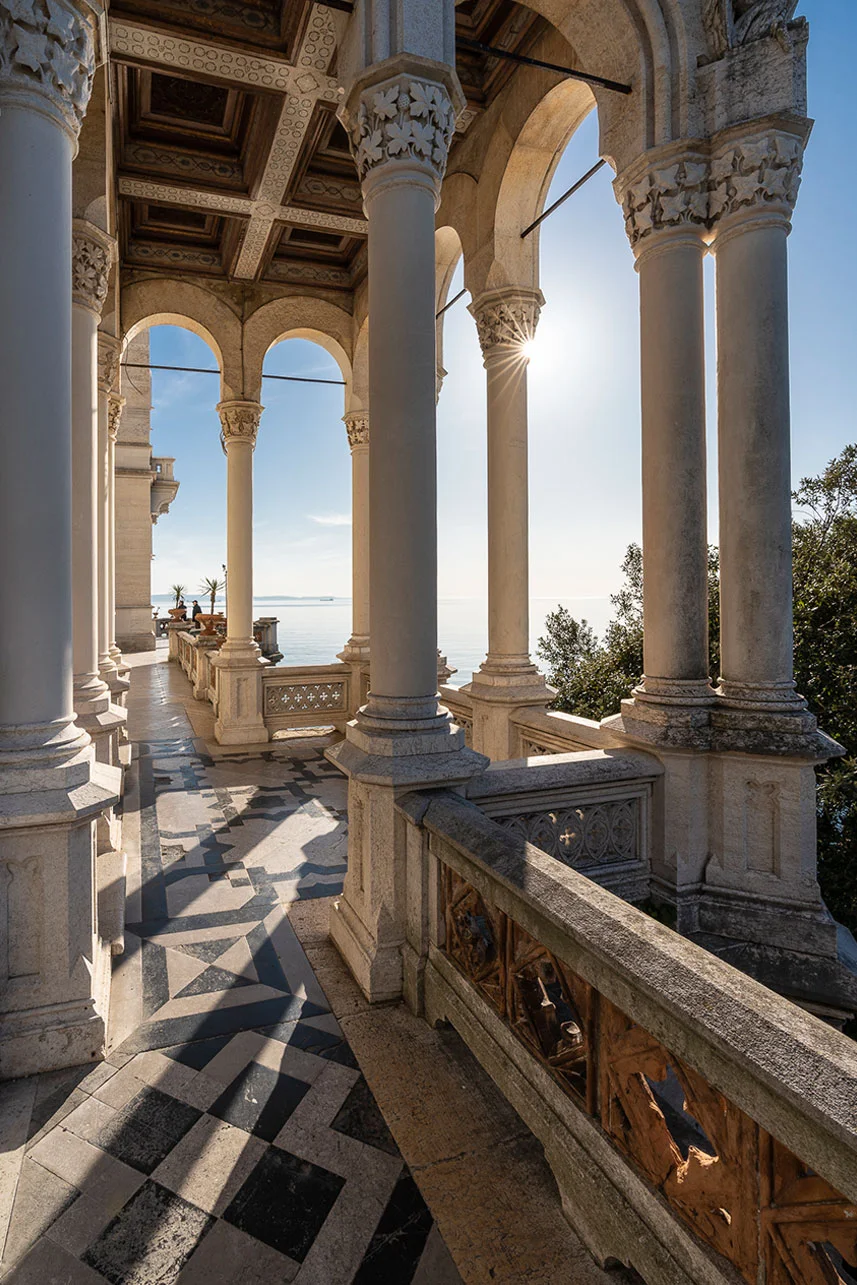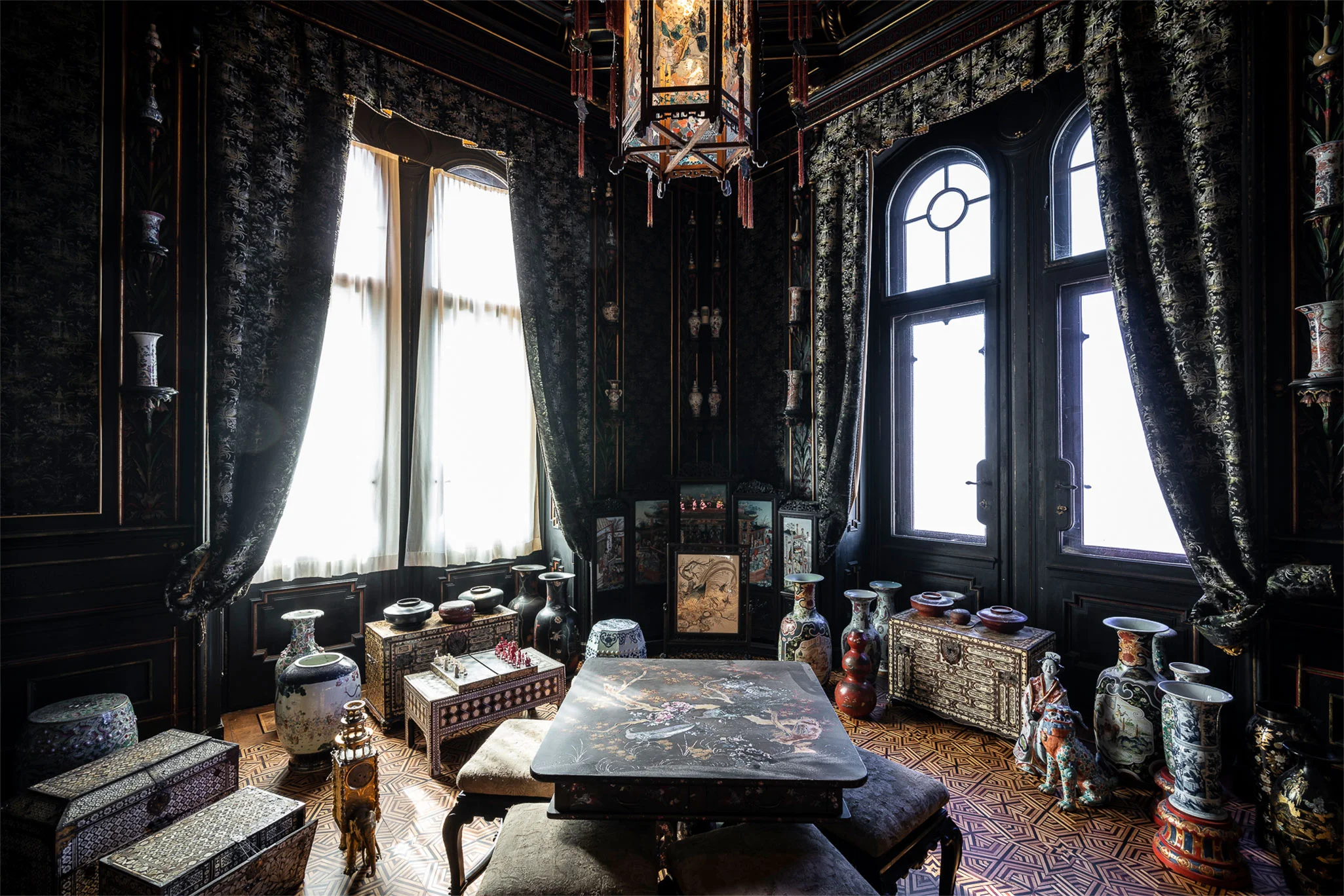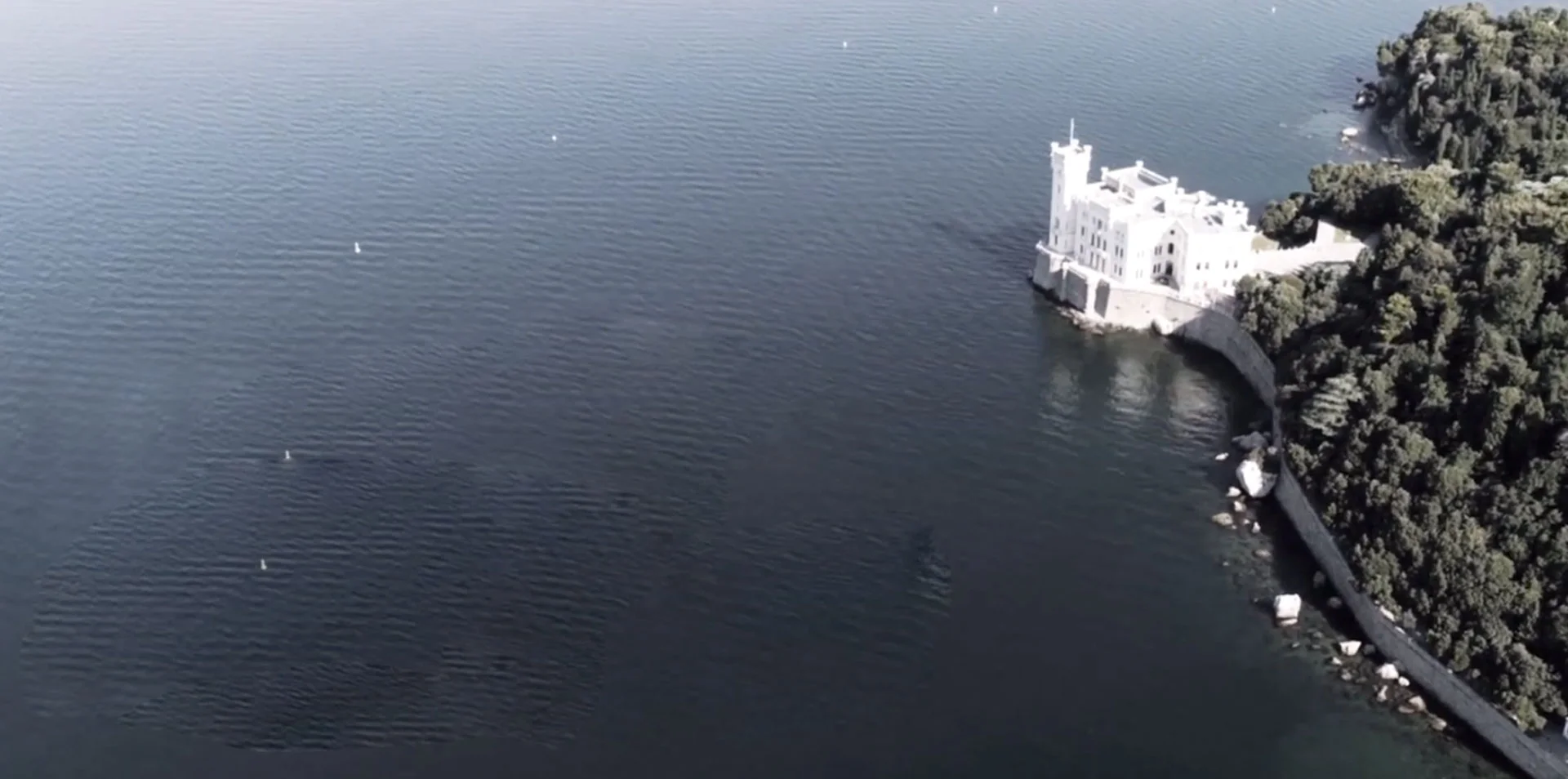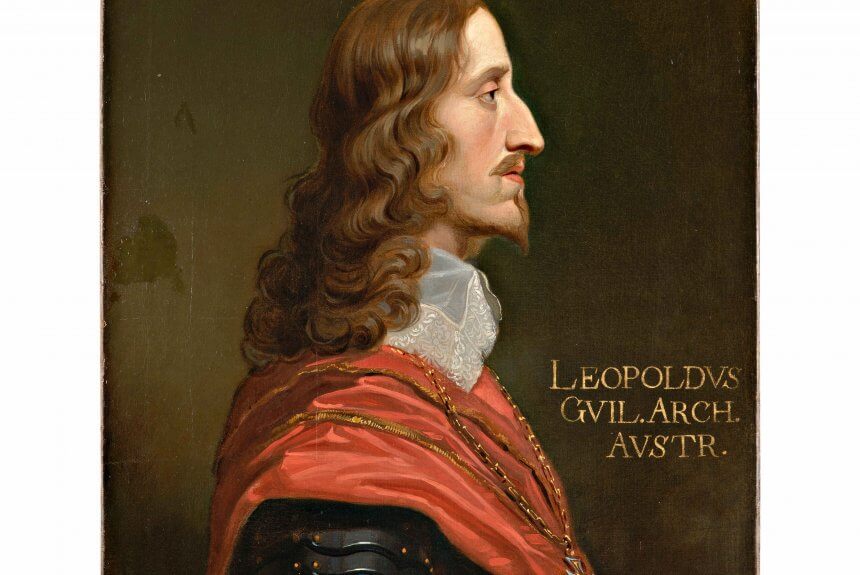The oil painting, as indicated by the inscription on the right in capital letters, depicts Leopold Wilhelm I of Habsburg, Archduke of Austria (1614-1662), the youngest son of Emperor Ferdinand II, who was governor of the Spanish Netherlands from 1647 to 1656 and an avid collector, who greatly expanded the family’s collections through massive acquisitions on the antiques market, which was particularly vibrant in Antwerp at the time.
The Hungarian painter Joseph Kis (Kiss or Kisz; Eisenstadt, 10 January 1833 – Vienna, 20 September 1900) reproduces him in profile, following the model of classical-Renaissance effigies, with “Spanish” hairstyle, clad in cuirass and cape, on which hangs a cross with chain.
Kis studied the genre of historical painting at the Academy of Fine Arts in Vienna, where his teachers were Johann Nepomuk Geiger and Karl von Blaas, both painters who were highly regarded by Maximilian and who probably recommended him to the Archduke as their pupil specialising in portraits.
Maximilian was his most enduring and prominent patron, who commissioned Kis, and other artists, to make copies of portraits from the imperial collections in Vienna, forming a personal gallery of ancestors for Miramare. After his execution in Mexico in 1867, the painter returned to Hungary and predominantly painted altarpieces and portraits for Hungarian nobility. He later settled in Vienna and from 1876 to 1897 was a member and director of exhibitions at the Künstlerhaus in Vienna.
The painter also portrayed the Emperor of Austria several times, and among his best executions is the large oil painting of Franz Joseph I during the Austro-Hungarian Compromise Negotiations, 1867-70, now found in Room V of the Heeresgeschicteichen Museum of Military History in Vienna.






Recent Comments